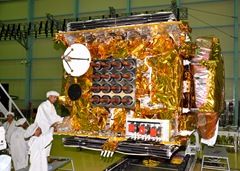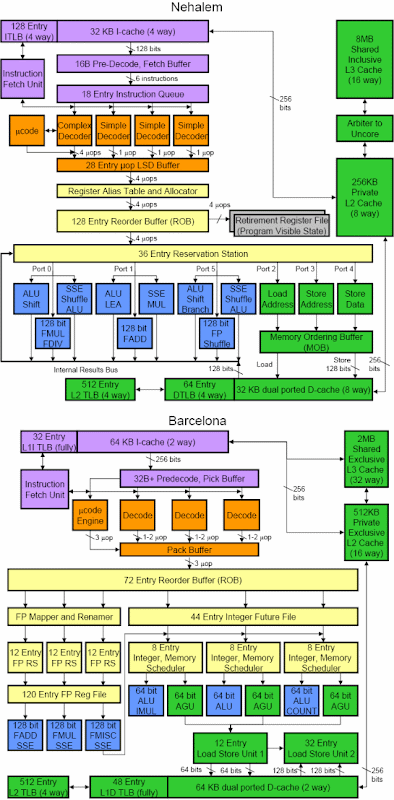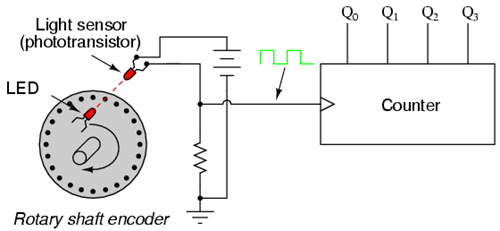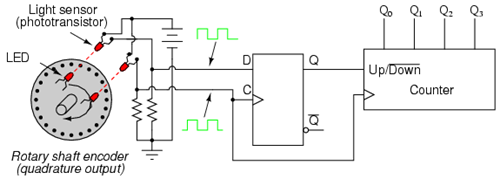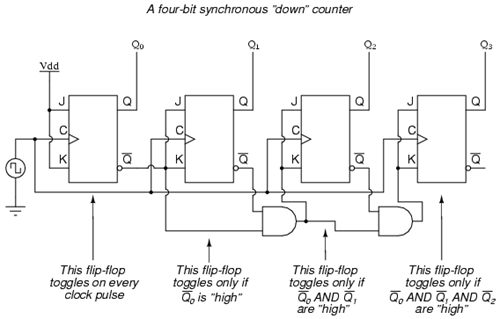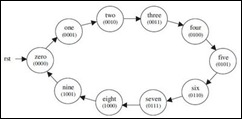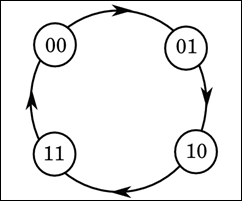1. 8-bit Micro Processor
2. RISC Processor in VLDH
3. Floating Point Unit
4. LFSR - Random Number Generator
5. Versatile Counter
6. RS232 interface
7. I2C Slave
8. 8b10b Encoder/Decoder
9. Floating Point Adder and Multiplier
10. Progressive Coding For Wavelet-Based Image Compression
11. An Area-Efficient Universal Cryptography Processor for Smart Cards
12. FPGA Based Power Efficient Channelizer for Software Defined Radio
13. Implementation of IEEE 802.11a WLAN baseband Processor using FPGA with Verilog/VHDL code
14. FPGA Implementation of USB Transceiver Macrocell Interface with Usb2.0 Specifications
15. Design of a Multi-Mode Receive Digital-Front-End for Cellular Terminal RFIC
16. Superscalar Power Efficient Fast Fourier Transform FFT Architecture
17. High-Speed Architecture for Reed-Solomon Decoder/Encoder
18. Fault Secure Encoder and Decoder for Nano-memory Applications
19. Implementation Huffman Coding For Bit Stream Compression In Mpeg – 2
20. Implementation of Hash Algorithm Used for Cryptography And Security
21. Implementation of Scramblers and Descramblers in Fiber Optic Communication Systems – SONET and OTN
22. Implementation of Matched Filters Frequency Spectrum in Code Division Multiple Access (CDMA) System and its Implementation
23. High Definition HDTV Data Encoding and Decoding using Reed Solomon Code
24. Design & Implementation of Noise / Echo canceler using FPGA with Verilog/VHDL
25. A VLSI Architecture for Visible Watermarking In A Secure Still Digital Camera (S2dc) Design
26. FPGA-Based Architecture for Real Time Image Feature Extraction
27. Implementation of Lossless Data Compression and Decompression using (Parallel Dictionary Lempel Ziv Welch) PDLZW Algorithm
28. 8/16/32 Point Fast Fourier Transform Algorithm using FPGA with Verilog/VHDL
29. VLSI Implementation of Booths Algorithm using FPGA with Verilog/VHDL
30. Design of a Multi-Mode Receive Digital-Front-End for Cellular Terminal RFICs
31. VLSI implementation of Cascaded-Integrator-Comb Filter
32. VLSI implementation of Wave-Digital-Filters
33. VLSI implementation of Notch filters
34. VLSI implementation of fractional sample rate converter (FSRC) and corresponding converter architecture
35. VLSI implementation of canonical Huffman encoder/decoder algorithm using FPGA with Verilog/VHDL code
36. VLSI implementation of RC5 Encryption/Decryption Algorithm
37. VLSI implementation of Steganography using FPGA with Verilog/VHDL code
38. VLSI implementation of 16 Bit fixed point DSP Processor using FPGA with Verilog/VHDL
39. VLSI Implementation of Address Generation Coprocessor
40. VLSI Implementation of AHDB (Adaptive Huffman Dynamic Block) Algorithm
41. Implementation of LZW Data Compression Algorithm.
42. A Low Power VLSI Implementation for JPEG2000 Codec using FPGA with Verilog/VHDL
43. A Verilog Implementation of Built In Self Test of UART
44. Fuzzy based PID Controller using VHDL for Transportation Application
45. VLSI Architecture and FPGA Prototyping of a Digital Camera for Image Security and Authentication
46. Scalable multi gigabit pattern matching for packet inspection
47. An FPGA-based Architecture for Real Time Image Feature Extraction
48. Synchronization in Software Radios – Carrier and Timing Recovery Using FPGAs
49. Optimized Software Implementation of a Full-Rate IEEE 802.11a Compliant Digital Baseband Transmitter on a Digital Signal Processor
50. High-Speed Booth Algorithm Encoded Parallel Multiplier Design
51. Implementation of IEEE 802.11a WLAN Baseband Processor
52. MPEG-4 AVClH.264 Transform Coding Design using FPGA with Verilog/VHDL
53. FPGA based Generation of High Frequency Carrier for Pulse Compression using CORDIC Algorithm
54. Watermarking in a Secure Still Digital Camera Design
55. DCT/IDCT Algorithms Implemented in FPGA Chips for Real-Time Image Compression
56. VLSI Architecture and FPGA Prototyping of a Digital Camera for Image Security and Authentication
57. Robust Image Watermarking Based on Multiband Wavelets and Empirical Mode Decomposition
58. A VLSI Architecture for Visible Watermarking in a Secure Still Digital Camera (S2DC) Design
59. VLSI Design & Implementation of Cryptography AES/DES Encryption Algorithm using FPGA with Verilog/VHDL code
60. VLSI Design & Implementation of Viterbi Algorithm-Encoder/Decoder using FPGA with Verilog/VHDL code
61. VLSI Design & Implementation of DDRR Algorithm using FPGA with Verilog/VHDL code
62. VLSI Design & Implementation of Dynamic/Deficit Round Robin Algorithm using FPGA with Verilog/VHDL code
63. VLSI Design & Implementation of Watermarking Algorithm using FPGA with Verilog/VHDL code
64. VLSI Design & Implementation of Secure transmitting and receiving text data in communication systems using FPGA with Verilog/VHDL code
65. VLSI Design & Implementation of UART Asynchronous Transmitter/Receiver using FPGA with Verilog/VHDL code
66. VLSI Design & Implementation of RS-232 Transmitter/Receiver using FPGA with Verilog/VHDL code
67. VLSI Design & Implementation of Asynchronous Serial controller using FPGA with Verilog/VHDL code
68. VLSI Design & Implementation of Universal Serial Bus USB Device Controller using FPGA with Verilog/VHDL code
69. VLSI Design & Implementation of GPS-GSM based Home Automation System using FPGA with Verilog/VHDL code
70. VLSI Design & Implementation of 16/32/64-bit Low Power RISC/CISC Processor using FPGA with Verilog/VHDL code
71. VLSI Design & Implementation of Multichannel I2S Audio Controller using FPGA with Verilog/VHDL code
72. VLSI Design & Implementation of Asynchronous FIFO using FPGA with Verilog/VHDL code
73. VLSI Design & Implementation of AHB Master/Slave using FPGA with Verilog/VHDL code
74. VLSI Design & Implementation of AMBA AHB to PVCI Bridge using FPGA with Verilog/VHDL code
75. VLSI Design & Implementation of Huffman Encoder/Decoder using FPGA with Verilog/VHDL code
76. VLSI Design & Implementation of Programmable 16-Tap FIR Filter using FPGA with Verilog/VHDL code
77. VLSI Design & Implementation of 2-D Convolution Engine using FPGA with Verilog/VHDL code
78. VLSI Design & Implementation of VGA/LCD Controller using FPGA with Verilog/VHDL code
79. VLSI Design & Implementation of JTAG TAP controller using FPGA with Verilog/VHDL code
80. VLSI Design & Implementation of Booth Multiplier using FPGA with Verilog/VHDL code
81. VLSI Design & Implementation of Pipeline JPEG Encoder using FPGA with Verilog/VHDL code
82. VLSI Design & Implementation of Cyclic Redundancy Check ECRC/LCRC Error Check using FPGA with Verilog/VHDL code
83. VLSI Design & Implementation of Vehicle Tracking & Safety System using FPGA with Verilog/VHDL code
84. VLSI Design & Implementation of Low Power FIR Filter using FPGA with Verilog/VHDL code
85. VLSI Design & Implementation of Pattern Generator using FPGA with Verilog/VHDL code
86. VLSI Design & Implementation of PCI Express using FPGA with Verilog/VHDL code
87. VLSI Design & Implementation of Highspeed USB 2.0/Superspeed USB 3.0 Transmitter and Receiver using FPGA with Verilog/VHDL code
88. VLSI Design & Implementation of Wishbone Controller using FPGA with Verilog/VHDL code
89. VLSI Design & Implementation of PVCI Master/Slave using FPGA with Verilog/VHDL code
